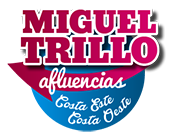Miguel Trillo
He was born in Jimena de Ia Frontera (Cádiz) In 1953. He has graduated in Spanish Philology and in Information Sciences specialising in Imagery from the University of Madrid.
Since the 1970s he has been taking pictures of young people against a musical backdrop (rocks concerts, disco parties). Originally these youngster's were all from his own family or circle of friends (Malaga, Seville). Then in the 1980s he began to turn unknown figures forming part of the Madrid scene, known as La Movida, into his prime target -the Pop Purrí exhibition at the Ovidio Gallery (1982) and at the Sala Amadis (1983) and in an anonymous edition of six issues of the fanzine Rockocó (from 1980 to 1984). Trillo ended the decade reflecting the change from one generation to another' in two works published in the creative magazine Sur Exprés: Los nuevos pijos (1988) and Madrid hip hop (1988).
In the early 1990s he portrayed Spanish youth in small provincial capitals for the Sunday supplement of El Pais newspaper. This work was exhibited at the Moriarty Gallery (1992) in Madrid in a show entitled Souvenirs, with strips of post cards being edited for the catalogue. In 1993 Trillo turned El Manantial Gallery, in Barcelona, into a souvenir shop, with the reproduction of his photos stamped on tourist items. Since 1994 he has been living in Barcelona. It is in this city that he produced the series Geografía Moderna, a journey around the linguistic or territorial frontiers of the Iberian Peninsula. Together with the portraits of these youngsters, Trillo also published postage stamps - in the El Europeo magazine (1997), and H20 Gallery, Barcelona (1999 and 2004).
His last two complete series entitled (as yet unpublished) and Habaneras (exhibited at the Círculo de Bellas Artes in Madrid as part of the PhotoEspaña 2005 show). Although these series are very different, they both have references to tobacco and sexuality in a tropical environment (Manila and Havana). The artist is currently working on three projects on portable frontiers: Zoom, portraits of young immigrants- in concerts and discos - reproduced on telephone cards; Gigasiápolis, portraits showing the youth culture that has grown up in the megacities of Asia; Desfile/ Parade, portraits of Caribbean youths in the annual parades that take place along the main boulevards In central Manhattan.
Miguel Trillo's work - a mix of document, concept and passion - is found in major public and private collections in Spain.




